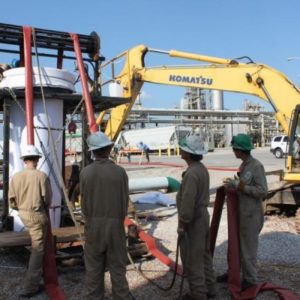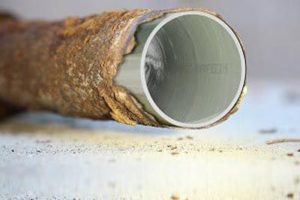If you manage large commercial, institutional, or municipal pipe networks, you may have heard of CIPP lining as a viable alternative to traditional pipe restoration methods. Cured In Place Pipelining (CIPP) is a pipe repair method that involves placing a dry tube inside the old pipe to form a structural bond that prevents further leakage.
It is a compelling alternative to the traditional pipe restoration method because it does not require excavation to remove the old pipe. CIPP works with any type of plumbing system and can be used on large diameter pipes such as those used in institutional and municipal pipe networks.

Non-Invasive Commercial CIPP Lining
How CIPP Works
Cured-In-Place-Pipe (CIPP), is an approved ASTM method and preferred method to rehabilitating cracked, broken and failed sanitary or storm sewer pipes. The process can be used to rehabilitate virtually any type of pipe including; Clay, Cast Iron, Orangeburg, PVC, ABS, HDPE, Concrete Pipe or Corrugated Metal Pipe. CIPP liners are designed to be independently structurally strong, not relying on the host pipe for any structural strength contribution. CIPP liners can bridge offset pipe joints or gaps where sections of pipe are missing, and stretch to fit irregular pipe sections.
Installation of a cured in place pipe liner results in a new ASTM certified stand-alone pipe within the existing deteriorated host pipe. A flexible felt liner impregnated with resin is inserted into the host pipe. Using pressure, the liner is pressed into existing cracks, joints, lateral connection flares, existing pipe curvatures, and pipe end flares to lock the liner into place. The liner fills the cracked, open portions of the pipe but does not over expand or balloon through the missing portion of pipe. Once hardened (cured), it forms a continuous, tight fitting, corrosion resistant and structural “new” pipe-within-a-pipe. With a 50 to 100-year design life, it will virtually never deteriorate under normal operational and environmental conditions.

Epoxy lined small diameter pipe.
Advantages of CIPP Lining
Non-Invasive Pipe Repair and Restoration
CIPP pipelining involves installing concentric tubes in large diameter pipes from manhole to manhole or basin to basin, meaning that you do not have to dig when installing new pipes. This saves you the distress of having to dig ugly trenches on the site. It is an invaluable advantage if you want to preserve a pristine landscape or protect delicate infrastructure from damage.
Low Cost Pipe Restoration
CIPP Pipelining is more cost-effective than traditional dig and replace pipe restoration methods. You do not need to dig trenches, divert traffic, or disrupt other services when replacing pipes. This saves you digging costs and the frustrating disruptions that occur during pipe restoration.
You also save on surface restoration costs that can take time and consume other resources. The No-Dig Method also means that you can replace pipes in less time and at a lower cost than when using traditional pipes.
Low Project Costs
CIPP lowers the labor and equipment costs when compared to traditional “dig and replace” restoration methods. Because CIPP is generally non-invasive, trenching, tunneling and digging up pavement and highway, disruption of traffic flow and high cost of surface repairs is no longer necessary. CIPP is fast, cost effective, non-disruptive and a permanent means of restoration to aging pipes.
Work with Experts
If you would like to install CIPP Pipelining on the facilities you manage, you should work with experienced pipeline contractors who understand the type of pipe needed for various applications. US Pipelining is a pioneer in CIPP Pipelining technology and specializes in installing trenchless pipes for commercial and institutional clients.
We have over 30 years experience in pipeline restoration and can handle complex projects. Our team has expertise in pipe handling large diameter projects for water supply, sewer, and storm water piping applications. Call us for a free consultation.